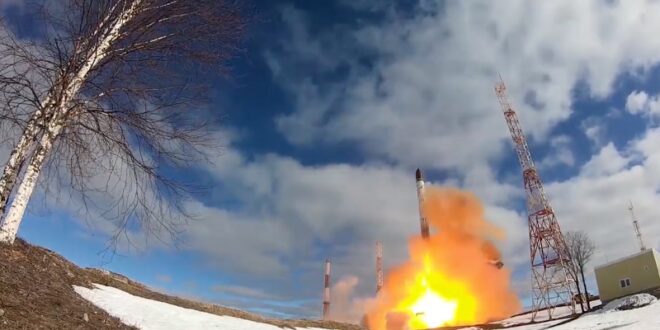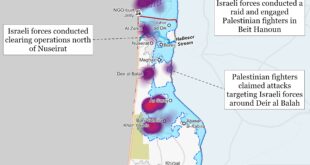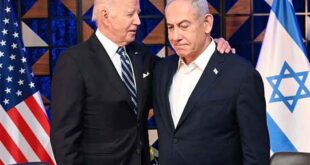Of Parity, Assured Destruction, & Mistrust
For the last 77 years, since the US first detonated nuclear weapons and annihilated the Japanese cities of Hiroshima and Nagasaki, an eerie ambivalence has prevailed on the subject of nuclear use. On the one hand, some scholars and practitioners are convinced of the myth of usable nuclear weapons. On the other, governments are devising policies for their use. Meanwhile, Russia is toying with the idea of escalating the war in Ukraine to nuclear levels, simply in order to de-escalate the on-going conflict. On the other side of the globe, China is designing a strategy to provide greater flexibility in the use of nuclear forces.
Significantly, the first nuclear attacks also defined the basis of nuclear stability. The relationship between the bellicose nuclear-armed states was marked by three characteristics: the quest for parity in arsenals, the certitude of mutual destruction, and a bizarre level of mistrust that drove states to adopt grotesque stratagems. Noam Chomsky has pointed out just how abominable the US nuclear war plans could be: “This US nuclear war plan, if our first alert system had alerted a Soviet strike, would have delivered 3200 nuclear weapons to 1060 targets in the Soviet Union, China, and allied countries in Asia and Europe.” General Butler, a former commander-in-chief of US Strategic Command, put it succinctly when he denounced current nuclear programmes and systems as a death warrant for humanity.
Flawed New START
The New Strategic Arms Reduction Treaty (New START) was signed on 8 April 2010 by the US and Russia. The instrument was a continuum of a bipartisan process to reduce nuclear arsenals. In 2021, the two parties agreed to extend the Treaty by five years. The key provision of the agreement limits nuclear warheads, delivery vectors, and launchers and institutes a system of verification.
The Treaty is, however, amiss, both conceptually and in substance. Conceptually, it is neither inclusive of all nuclear-armed states nor does it identify ‘mistrust’ as a key factor that stokes scepticism. In substance, it fails to recognise that all nuclear weapons, including tactical, are weapons in the same category, because when used, they have the potential to escalate to mass destruction. In addition, the Treaty pays no heed to the fact that warheads held in reserve can very quickly be deployed. But where it is fatally flawed is its inability to institute measures that diminish the intent to use. It doesn’t demand all nuclear-armed states to abjure the first use of nuclear weapons as an essential doctrinal point that allays the perils of nuclear devastation.
Nuclear Weapons: An Umbrella for Conventional War
Just how consequential the threat of use can be has been demonstrated in the course of the Ukraine conflict. Russia has obliquely threatened the use of nuclear weapons to provide an umbrella for its war. This has turned the Cold War idea of deterrence on its head. Moscow is using the deterrence value of its nuclear arsenal not to protect Russia but rather to provide space for conventional action. The Kremlin introduced an explicit nuclear dimension through its various declarations. On 18 February 2022, Russia conducted nuclear force manoeuvres prior to invading Ukraine. The event left little doubt as to the linkage of the timing with the impending conflict. On 24 February, Moscow warned NATO in a declaration that there would be unprecedented consequences should a third state attempt to obstruct Russia’s designs. President Putin went further on 27 February, announcing that Russia’s nuclear forces had been placed on “special alert.” This kind of public announcement regarding nuclear forces was last proclaimed by the US during the 1973 Yom Kippur War. Foreign Minister Sergei Lavrov later noted cryptically that a third world war would be “nuclear.”
The Bluff of Extended Deterrence
In this milieu, the very idea of ‘extended nuclear deterrence’ takes an outlandish turn. The logic of guarantee against a nuclear attack on a third country implies that the guarantor launches a retaliatory nuclear strike. It also implies that the guarantor accepts the consequences, irrespective of circumstance, extent of convergence of interests, or degree of mutuality. This, as recent events in Ukraine have shown, is not rational.
Extended nuclear deterrence demands that both guarantor and beneficiary accept the same conditions of nuclear use, magnitude of response, and norms for escalation, and share the same strategic interests. Since none of these propositions are indubitable, the substance of extended nuclear deterrence is ultimately dependent on the guarantor accepting catastrophic consequences on behalf of a third party. States under this canopy might want to re-consider the credibility of extended nuclear deterrence in contemporary strategic circumstances. The reliance on the nuclear deterrent capabilities of a major power is much more an act of clutching at a straw than a reflection of reality.
Prospects for Nuclear Stability: A Revisit
Many factors that deterred military conflict during the Cold War and after have weakened. The growing parity of arsenals, absence of moderating pressures, and power imbalances between states have exposed underlying stresses within the global system and increased the probability of conflict.
Russia’s case is symptomatic of the current anarchic state of affairs. Having lost the economic, technological, and political heft of the Soviet era, it retains great power aspirations, demands exceptionalism, and clings to nuclear superpower status. Its nuclear arsenal is a key component of leverage: it endows immunity from military pressure and the leeway to pursue an independent foreign policy.
Nuclear deterrence today can only work in conjunction with agreements, limitations, and transparency. Without these, it brings antagonistic powers to the brink of nuclear war in a crisis. In the present fragile conditions of deterrent relationships, the prospects for nuclear stability among the nine nuclear-armed states will remain forlorn.
The Challenge
Cold War nuclear paradigms cannot be further tweaked to provide an illusion of stability to the nine nuclear-armed states. Priority should be given to identifying methods to dispel mistrust while advancing the idea that globally, nuclear surety is neither served by ‘parity’ in arsenals nor ‘assurance’ of total devastation. The former has brought a multi-polar encore of an arms race into play, while the latter is a return to barbaric times when extinction was propagated as a solution.
Today, economics and interdependence are the engines of global power. Yet there is reluctance to step back from military situations such as what we see in Ukraine. Nuclear weapons cannot be reduced to a gambler’s game of dare. But to remove it from arsenals altogether is not practicable, especially since states are not ready to wean themselves from an instrument of power. The answer lies in transparency, shadowed by a withdrawal from this calamitous obsession through a general adoption of a policy of no first use (NFU) of nuclear weapons. This is a first step towards disarmament.
 Eurasia Press & News
Eurasia Press & News




